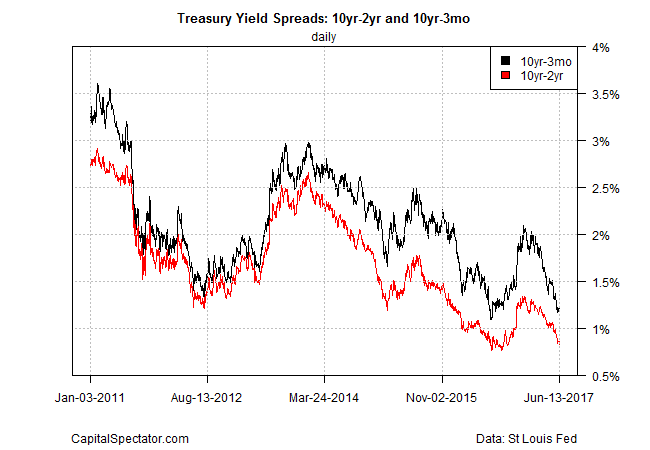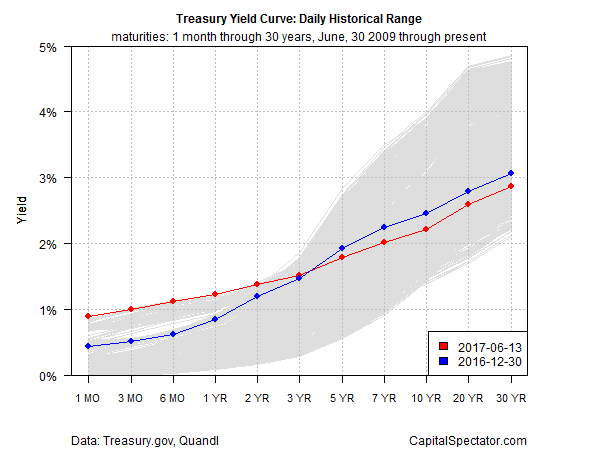The Federal Reserve is expected to raise interest rates today – at a time when the Treasury yield spread has become relatively compressed. That’s a warning sign, according to the historical record. The question is whether the shelf life for this analysis has expired?
Tim Duy, a professor at the University of Oregon, reminds that “recent history suggests that the greatest risk of recession occurs if the Fed continues to tighten after the initial inversion of the yield curve, which happened prior to the last two recessions.” The curve isn’t inverted, but it’s getting close. Meantime, the Fed is widely expected to lift interest rates again today, laying the ground work for squeezing the curve a bit more.
Consider the 10-year/2-year Treasury yield spread, which fell to 83 basis points yesterday (June 13), based on daily data via Treasury.gov. That’s the smallest spread since last October and slightly below the long-term average of 93 basis points over the past four decades.

The recent decline in the spread is a byproduct of a higher 2-year yield and a falling 10-year yield. The two yields had been tracking each other closely up until March, when each went their separate ways. The 2-year yield remained relatively stable, with a slight upside bias, while the benchmark 10-year rate declined. As of yesterday, the 2-year yield, currently at 1.38%, is close to its highest level since the last recession. Meantime, the 2.21% 10-year rate is near a seven-month low and far below its 4% post-recession high.

Reviewing how the entire yield curve has changed since last year’s close highlights the tightening bias of late. Rates on the short end of the curve up through the 2-year maturity are at or near the highest levels since the recession ended in mid-2009. Maturities from 5-year up, by contrast, are at middling levels and have fallen so far this year.

Let’s be clear: recession risk is low at the moment. The probability is virtually nil that the NBER will label May as the start of a new downturn in the US, based on data published to date, and near-term estimates of recession risk through next month are expected to remain low, as outlined in the June 11 edition of The US Business Cycle Risk Report.













Leave A Comment